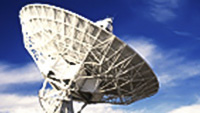Search and order online
Earth within reach: Sound of BepiColombo Earth flyby
- Video Online only
- Title Earth within reach: Sound of BepiColombo Earth flyby
- Released: 06/05/2020
- Length 00:00:15
- Language English
- Footage Type Exterior shot
- Copyright ESA/BepiColombo/ISA/ASI-INAF, CC BY-SA 3.0 IGO
- Description
A sonification of data recorded by the Italian Spring Accelerometer (ISA) aboard the BepiColombo spacecraft as it neared the closest point to Earth of the April 2020 flyby.
The data in this recording were obtained on 10 April as the spacecraft approached the planet’s surface from the distance of 27 844 km to 13 107 km. The closest point of the flyby, which enabled BepiColombo to harness Earth’s gravity to tighten its trajectory around the Sun, was at the distance of 12 689 km from the planet’s surface.
The original frequency of the dataset, inaudible to humans, had to be enhanced by the team from Italy’s National Institute for Astrophysics (INAF) in order to create the audio track. The data was condensed so that one hour of measurements would equal about a minute of audio.
Carmelo Magnafico, one of the ISA team members, compares the recording to the sound conducted through the rail when a train is approaching.
“What you are hearing is actually the sound of BepiColombo,” says Carmelo. “The vibrations caused by external and internal factors are transmitted into our accelerometer. It’s the same principle to when you put your ear on a rail to hear whether the train is coming.”
The ISA accelerometer consists of three spring-mass systems sensitive to the smallest deviations from the “freefall” state in the spacecraft motion dynamic. The instrument is so sensitive that it can detect the so-called solar radiation pressure, a tiny force that photons in the sunlight exert on the spacecraft as they hit its surface.
In another recording, obtained as the spacecraft flew through Earth’s shadow with no direct visibility of the Sun, the scientists could distinguish the moment when the sunrays stopped exerting pressure on the spacecraft’s solar panels.
“When the spacecraft enters the shadow and the force of the Sun stops, we can hear a slight vibration,” explains Carmelo. “The solar panels, previously flexed by the Sun, then find a new balance. Upon exiting the shadow, we can hear the effect again.”
Hearing a clear effect of such a subtle external influence showed the instrument capable of registering the smallest differences in motion.
“This is an extraordinary situation,” says Carmelo. “Since we started the cruise, we have only been in direct sunshine, so we did not have the possibility to check effectively whether our instrument is measuring the variations of the force of the sunlight,” Carmelo says. “This is a proof for us that the instrument is quite well-calibrated because the jump in the acceleration we measured is in line with our expectations.”
Once at Mercury, the ISA instrument will focus on studying the gravitational field of the smallest planet of the Solar System and its variations due to solar tides. Mapping local gravity anomalies will help scientists to better understand the internal structure of Mercury, a perplexing planet with a larger than expected inner core and an unexpected magnetic field.
The video accompanying the audio sequence consists of images captured by three ‘selfie’ cameras aboard BepiColombo’s transfer module. The images correspond with the time when the audio recording was obtained.


